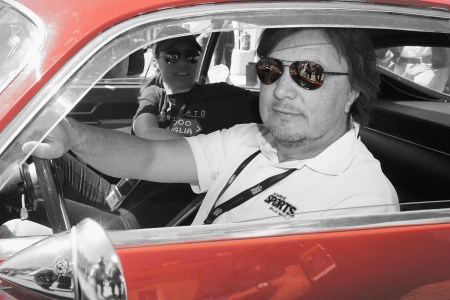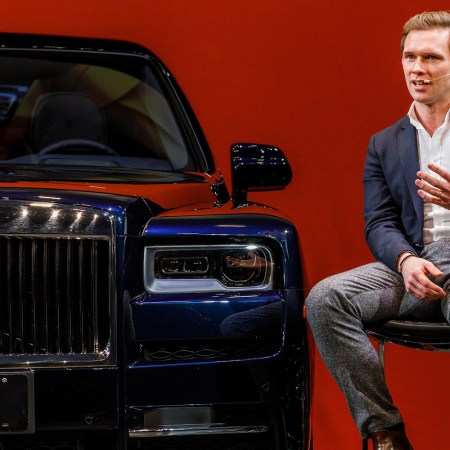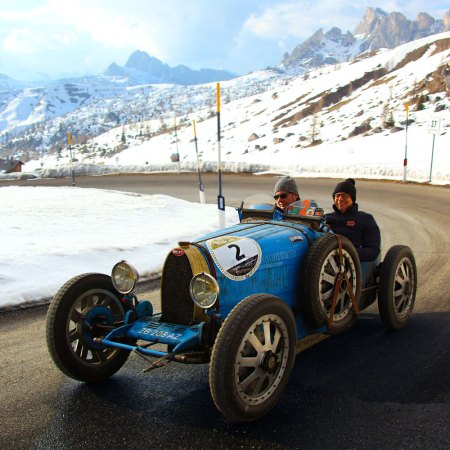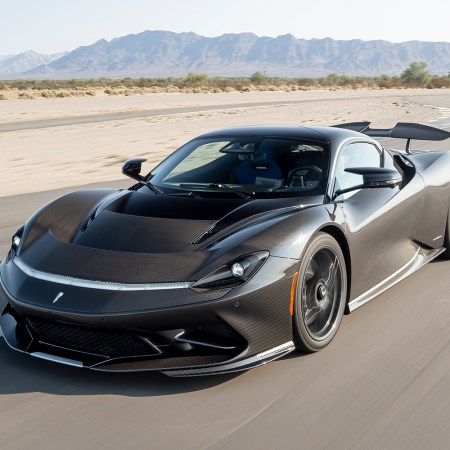Dany Bahar was trying to get his coachbuilding business off the ground when he went to lunch on the French Riviera with a Saudi prince. The prince was originally very pleased with the $2 million Bugatti he’d driven to the restaurant, but he was about to lose his appetite — for what should then pull up outside but a near-identical Bugatti. The prince took his car keys and tossed them across the table to Bahar.
“He tells me to do whatever I need with his car in order to make it unique,” Bahar tells InsideHook. “And that was when I got an insight into how someone who owns five or six hundred cars thinks. If he hadn’t seen that other Bugatti maybe it would never have occurred to him: it’s not about the car itself but how he just doesn’t want someone else to have the same car as him.”
That was the spark that changed the direction of Ares, the Modena-based coachbuilding company that Bahar co-founded with business consultant Waleed Ghafari only six years ago, but which is, by volume, already the world’s biggest operation of its kind. Ares takes already very special vehicles and — typically with money being no object — makes them true one-offs.
They’ve taken a four-door Rolls-Royce Phantom and turned it into a two-door coupe, for example. They’ve also transplanted Porsche 997 mechanics under a Porsche 964 Targa body. A Mercedes-Benz G63 was overhauled into something so far removed from the original it was given its own name, the X-Raid. Bentleys and Land Rovers, those paragons of design, get heavily modded. You get the (expensive) idea.

“You don’t buy a Bugatti for the car alone, but also for what it feels like to be one of the 500 who own one,” says Bahar. “And the higher the price of the product, the greater the weight is carried by this emotional element. Coachbuilding is a complicated matter but it’s not rocket science. All you have to play with are the hand-crafting and the design and the passions that sit behind them.”
Those are three attributes Bahar knows about. He was the man who launched Red Bull into Formula 1, and who then joined Ferrari as its senior vice president. There he convinced the company to pay more attention to its commercial department — that is, not simply produce engineering marvels, but also respond to customer requests for things like cupholders. Following that (yes, Bahar is one of the few to actually leave Ferrari on his own terms), he was CEO of Lotus. Here again he upset the apple cart by launching five new models in one year, as opposed to the more industry standard of one every five. He says he’s never understood why car design, engineering, testing and production need to take so long. He is not a patient man.
“Even back [with these companies] I felt that while product is important it’s individualization that’s even more important, and that it’s only a matter of time before the possibilities of individualization will come to every kind of luxury item on sale today,” argues Bahar. “You can see that the customization business [for so many types of luxury goods] has made huge progress over just the last few years.” There are, he adds, more people with a lot of money. “And the fact is that the more people there are who can buy a $2 million Bugatti, the more it’s a precondition that it has to be unique.”

Crucially, Bahar is not about to place constraints on how his clients want their cars either. As he puts it, no luxury car company “really likes another company coming along and messing with their cars,” because this amounts to a dilution of their brand. “But we don’t operate some kind of taste police,” he insists. “Different cultures have different ways.” Sure, the manufacturer may balk at, say, orange leather and diamond-studded steering wheels. “But if that’s beautiful to you, that’s what you get from us,” he says. Whatever it may be, it comes out of the Ares factory fully documented, safety-tested and road-legal, “just as you’d expect of any other car.”
And never mind matters of taste. While the manufacturers of most ultra-luxury cars can offer a degree of personalization, it’s too much hassle and too expensive — and, arguably, not worth their time — to upset the complex production lines most are locked into to offer full bespoke anyway. So what’s someone with billions burning a very large hole in their pocket supposed to do?
After 100 Years of Classic Cars, Andrea Zagato Is Ready for 100 More
Catching up with the CEO of the legendary Italian firm that has put its stamp on vehicles for Aston Martin, Rolls-Royce and MaseratiMore than this, this new demand seems to stem from a generational divide, Bahar contends. He suggests that now there’s a younger, media-literate, Insta-popping, super-wealthy customer for whom conspicuous consumption is “not as it was for their parents, when it was more about status, but rather now all about individualization. And since Ares has no real track record to speak of as yet, I think it’s working precisely because we understand that. That’s why people come to us, and come back to us. Satisfy them once and you have a customer for life.”
Ares reckons it can take on, at most, its target of 300 to 500 car modification projects each year, above which — Bahar has spotted the trap — having an Ares-modded car may cease to become distinctive. That, he laughs, still makes Ares a relatively tiny, extremely peripheral player in the wider car industry but, nonetheless, one that may become well-known.

Indeed, Bahar is also driving Ares forward in a way no coachbuilder has done before. If most surviving companies of this kind are historic brands essentially working in the background for other historic automakers, Bahar sees Ares as a luxury brand that’s consumer-facing with a public profile to match any other luxury outfit. Ares has recently opened a series of swank showrooms in Beverly Hills, Monaco and Milan, with London opening soon and New York likely. It has already launched its own supercar too, the sold-out S1 Coupé, and is planning its own SUV.
Curiously, it’s also following up with a collection of electric vehicles — or “luxury mobility solutions,” as the company is calling them — including a compact car and motorbike but also, less expectedly, a bicycle and kick-scooter. Bahar says these may not sell to the same one-percenters with huge car collections, unless it’s to get them from one side of their garage to the other, but, with the kick-scooter set to be priced at $9,500, they will at least to people of a similar mindset.
The realm Bahar is working in is, he concedes with a chuckle, “a very niche market.” Maybe that’s why he is hesitant when he speaks of his aim being to make coachbuilding “accessible” in a way it hasn’t been accessible before, something as straight-forward perhaps as visiting a tailor to have a suit made. He knows he’s operating in a rarefied world, one in which Saudi princes casually tell him to go to town on their Bugattis.
This article was featured in the InsideHook newsletter. Sign up now.






















